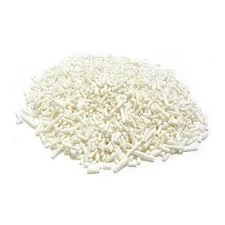
Exploring the Interaction Between Rubber and Acetone in Various Applications
The Intriguing Relationship Between Rubber and Acetone
Rubber, a versatile material known for its elasticity and resilience, plays a significant role in various industries, from automotive to healthcare. Meanwhile, acetone, a solvent characterized by its volatility and effectiveness in dissolving compounds, also finds extensive applications in laboratories and manufacturing. Understanding the relationship between rubber and acetone reveals important insights into both material science and industrial applications.
The Nature of Rubber
Rubber can be divided into two primary categories natural rubber and synthetic rubber. Natural rubber is derived from the latex of rubber trees (Hevea brasiliensis), while synthetic rubber is manufactured from petrochemical products. Regardless of the source, rubber is mainly composed of polymers, primarily polyisoprene, which gives it remarkable elasticity and strength. Due to these properties, rubber is used in tires, seals, gaskets, and countless other products.
The Role of Acetone
Acetone (C3H6O) is the simplest ketone and is a colorless, flammable liquid with a characteristic odor. Commonly used as a solvent, it is effective in dissolving many organic compounds, making it a favorite in laboratories and industrial settings. Acetone is also a component of nail polish remover and is used in the production of plastics and fibers. Its ability to dissolve a wide range of substances sometimes leads to the question what happens when acetone interacts with rubber?
Interaction of Acetone and Rubber
rubber and acetone

Knowing how acetone interacts with rubber is critical for various applications, particularly when considering its use as a cleaning agent or solvent. Acetone can degrade certain types of rubber, especially natural rubber and certain synthetic compounds, causing them to swell, soften, or ultimately break down. This reaction occurs because acetone disrupts the molecular structure of the rubber, leading to a loss of its mechanical properties. Therefore, care must be taken when using acetone in environments where rubber components are present.
In contrast, specific synthetic rubbers, such as silicone rubber, exhibit a greater resistance to acetone and other solvents. This resilience makes them suitable for applications in scenarios where exposure to chemicals is inevitable, such as in automotive gaskets or seals in chemical processing equipment. Understanding these interactions allows engineers and manufacturers to choose the right type of rubber for specific applications, minimizing the risk of chemical degradation.
Applications in Industry
In several industries, the relationship between rubber and acetone is leveraged in beneficial ways. For example, in the automotive sector, manufacturers often use acetone as a solvent during the production and finishing processes of rubber components. Acetone aids in removing residues and preparing surfaces for bonding or painting. However, great care must be taken to ensure that the rubber involved is compatible with acetone.
Another significant application is in the cleaning of rubber molds and components. When residues from rubber compounds accumulate on manufacturing tools, acetone can effectively clean the surfaces without damaging silicone rubber molds. This efficient cleaning process results in longer-lasting molds and less downtime in production.
Conclusion
The relationship between rubber and acetone is a fascinating example of how materials interact within industrial applications. While acetone serves as a valuable tool for cleaning and processing rubber, its potential to degrade certain types of rubber must be acknowledged and managed. Understanding these dynamics ensures that industries can harness the beneficial properties of both rubber and acetone effectively, leading to improved product quality and performance across various sectors. As technology continues to evolve, further research into the interactions between materials like rubber and solvents like acetone will likely reveal new insights and applications, fostering innovation in material science and engineering.
-
Understanding Synthetic Rubber OptionsNewsApr.27,2025
-
Trichloroisocyanuric Acid: Essential for Clean and Safe WaterNewsApr.27,2025
-
Sodium Dichloroisocyanurate: Key to Safe Water TreatmentNewsApr.27,2025
-
Sodium Acid Pyrophosphate: Essential in Modern Food ProcessingNewsApr.27,2025
-
Essential Water Treatment ChemicalsNewsApr.27,2025
-
Denatured Alcohol and Its Industrial UsesNewsApr.27,2025
-
The Versatile Uses of Sodium BicarbonateNewsApr.24,2025
Hebei Tenger Chemical Technology Co., Ltd. focuses on the chemical industry and is committed to the export service of chemical raw materials.
-

view more DiethanolisopropanolamineIn the ever-growing field of chemical solutions, diethanolisopropanolamine (DEIPA) stands out as a versatile and important compound. Due to its unique chemical structure and properties, DEIPA is of interest to various industries including construction, personal care, and agriculture. -

view more TriisopropanolamineTriisopropanolamine (TIPA) alkanol amine substance, is a kind of alcohol amine compound with amino and alcohol hydroxyl, and because of its molecules contains both amino and hydroxyl. -

view more Tetramethyl Thiuram DisulfideTetramethyl thiuram disulfide, also known as TMTD, is a white to light-yellow powder with a distinct sulfur-like odor. It is soluble in organic solvents such as benzene, acetone, and ethyl acetate, making it highly versatile for use in different formulations. TMTD is known for its excellent vulcanization acceleration properties, which makes it a key ingredient in the production of rubber products. Additionally, it acts as an effective fungicide and bactericide, making it valuable in agricultural applications. Its high purity and stability ensure consistent performance, making it a preferred choice for manufacturers across various industries.











